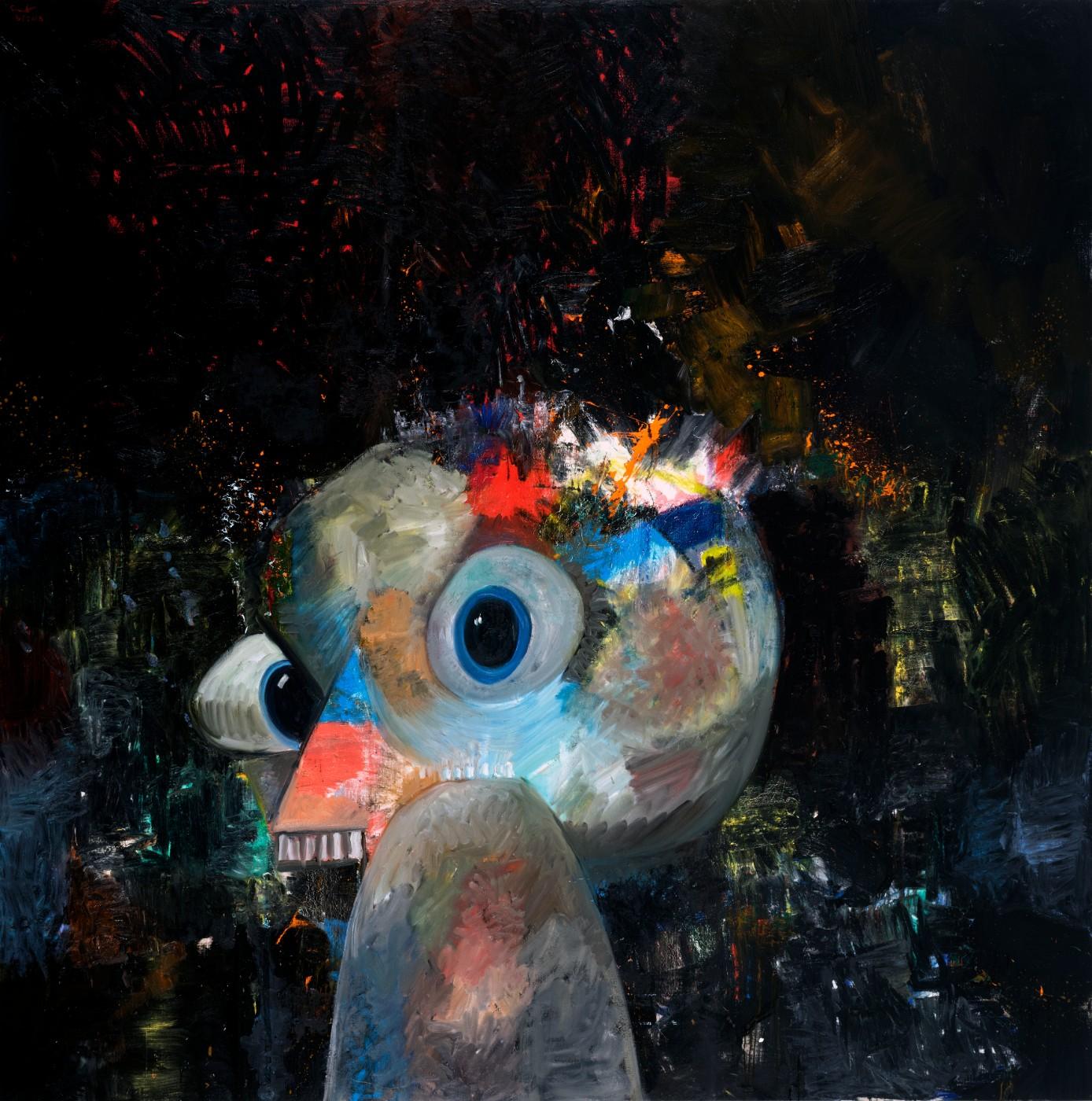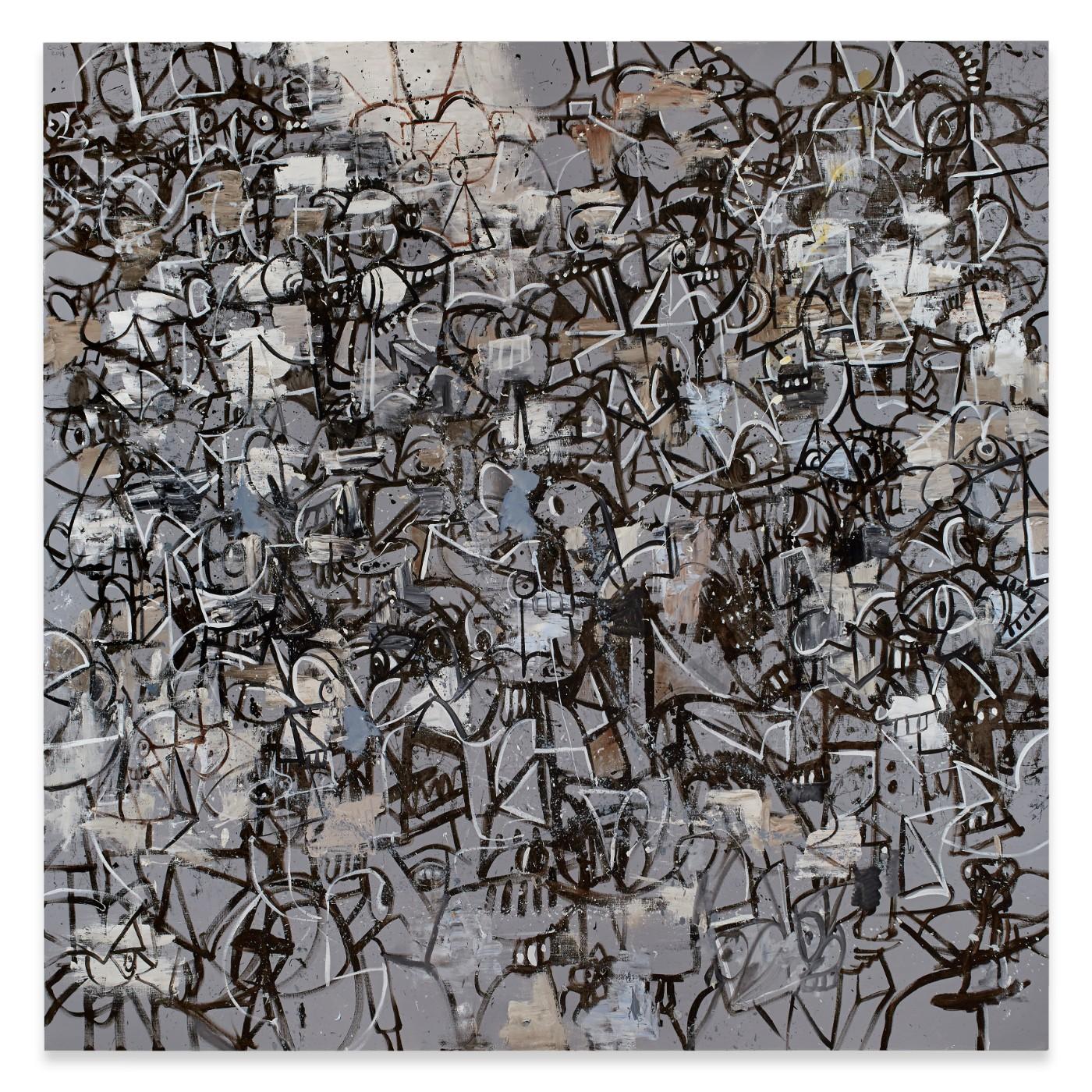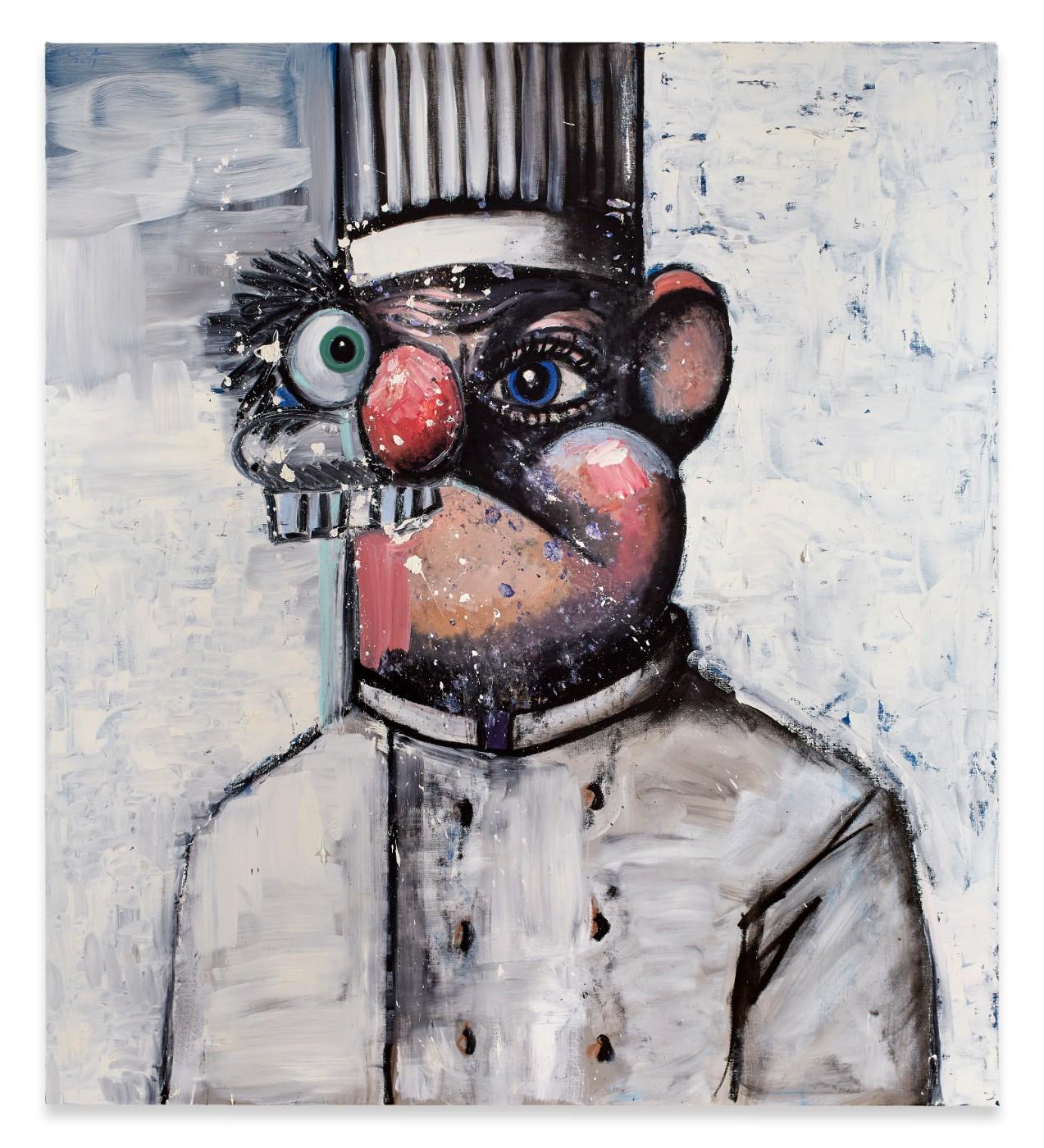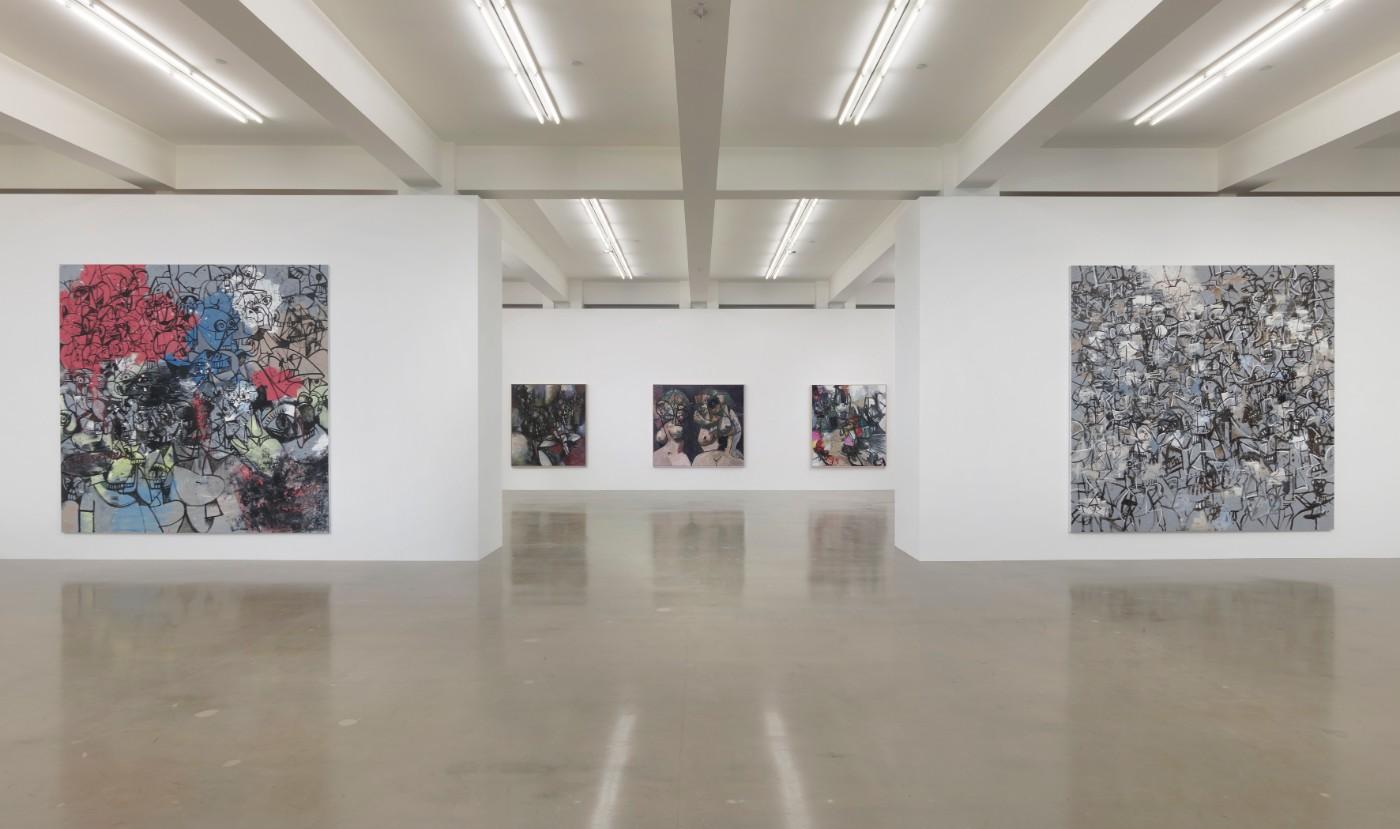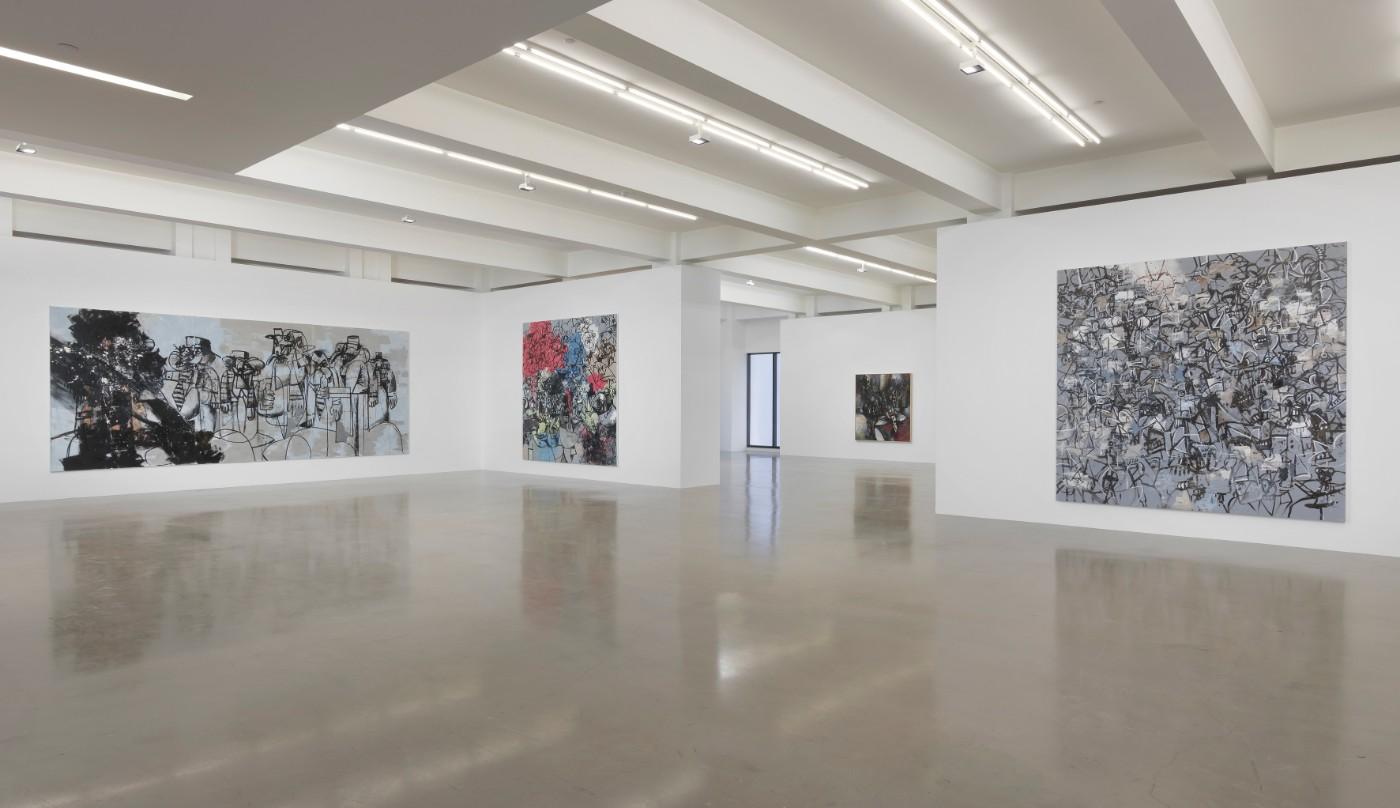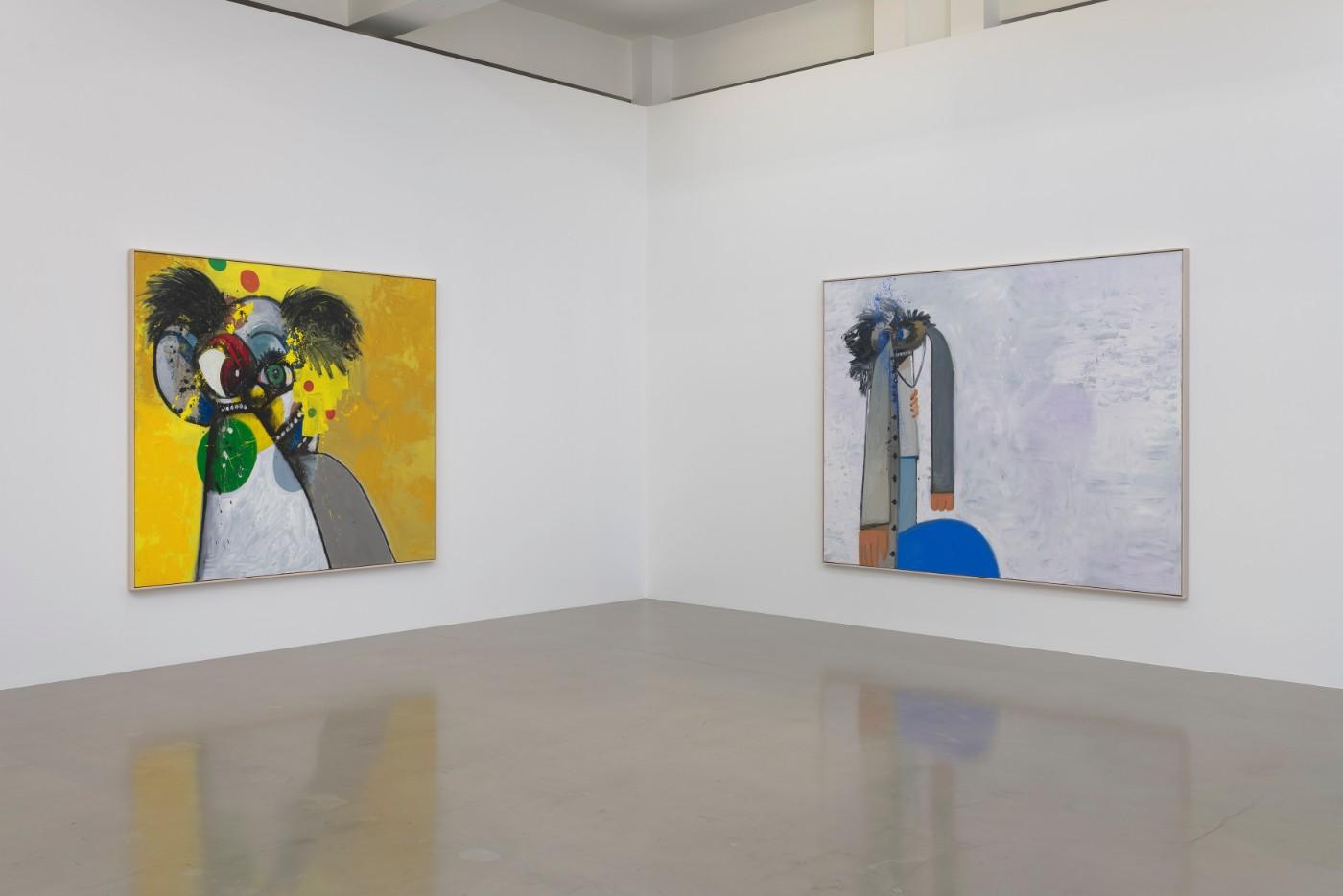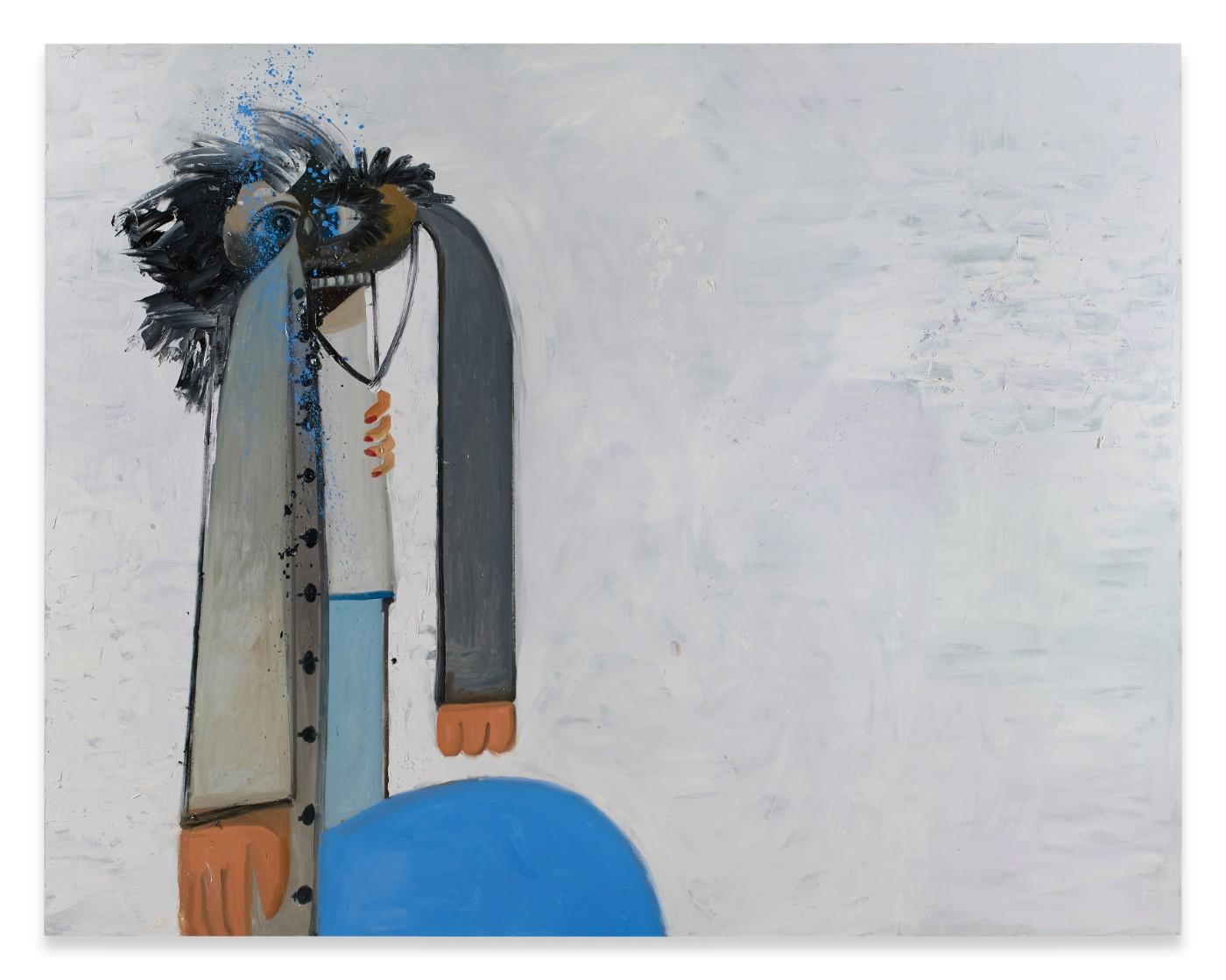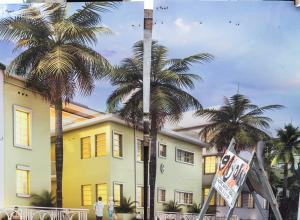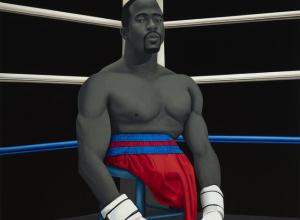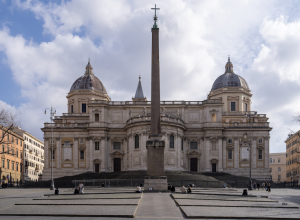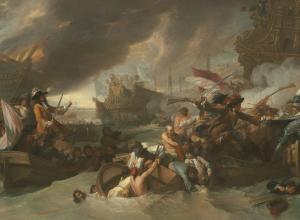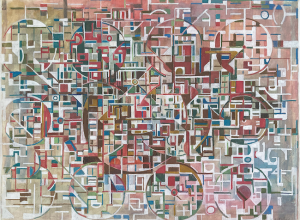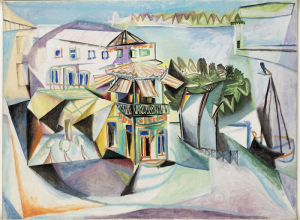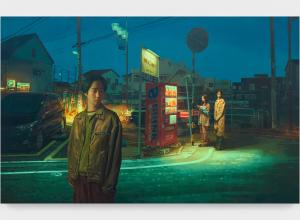Mainly a New York artist, in the early 1980s Condo went with Basquiat to Los Angeles where the former had his first show in a club called The Rhythm Lounge. The accompanying music was provided by a new band making their live debut, The Red Hot Chili Peppers.
“The early days I spent in Los Angeles were hysterical, having to get a job selling pens in some crazy pen sales office on Hollywood Boulevard to make enough money to get back to New York. And while I was doing that, Basquiat did that painting Hollywood Africans out here when Rammellzee and Toxic and all these graffiti guys came. He was preparing for his first show at Larry’s [Gagosian],” recalls Condo.
Basquiat was driving what Condo remembers as a big wide gangster car when they pulled over one night to pick up a young woman hitchhiking. They took her to her destination and said good-bye and never thought of it again until 20 years later when Condo attended the opening of a Damien Hirst show. “His ex-wife, Mia comes up to me and says, ‘Hey, do you remember in 1981 when you were in a giant car with Jean-Michel and you picked up a hitchhiker? That was me!’” laughs Condo. “It actually turned out the girl that was hitchhiking was Damien Hirst’s wife.”
These days, Condo paints like a man possessed. The ten new works in the show were all completed in the past year, and in May he’ll be taking a selection to Venice for the Biennale where the theme will be May You Live in Interesting Times.




